Home > Public lighting >
Multiconfiguration optics "DIAMOND OPTICS"
In all luminaries internationally patented multifunction optics
of a new generation called DIAMOND OPTICS is installed. It is a system of four indipendently reguladable
fractional reflectors that enable to create a pattern of a luminary according to
a place of instalation.
The DIAMOND OPTICS system enables to bild lighting only along one side
of a road and to use less luminaries with a lower power requirement. It leads to a singificant
reductions on building expences, distribution of cables, cables themselves,
and on business expenses.
| Currently used luminaries have an inbuilt two-beamed reflector that makes characteristics of emission and reminds two fingers. This diagram approximately agrees with a standard and straigt road. However certain part of emited illumination always goes out of intended area and causes light pollution. Some types of luminaries enable moving of a lamp inside the reflector. By this way it is partly possible to curve fingers of emission characteristics and to adapt width of a road (see piture 1). But it never means a change of the shape of emission characteristics. There are three out of many effective configurations of the Diamond optics presented in piture 2. a) The Diamond optics aims the light mostly onto a road alike conventional dwo-beamed reflector, but in addition with an enhanced level of illumination of pavements. b) Illumination is spread to the width along both sides of the luminary. c) Illumination is spread equally around the luminary. |
|
Among these configurations there are many other settings that aloud smooth accomodation of the shape of emiting characteristics of the luminary to a shape of a luminated area. It is always possible to reach economic set-up.
Ordinary two-beamed reflectors are not so flexible.
| Picture 1 Ordinary two-beamed reflector - 3 positions of lamp |
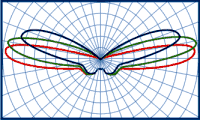 |
Diamanond_optics /picture 2 Multifunction optics - 3 setting of reflector |
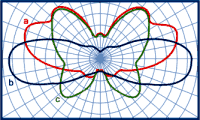 |
Multifunctional optics - brief rules for usage |
|||
Configuration of reflectors |
Izolux diagram |
Visualization |
|
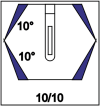 |
 |
 |
Configuration of reflector: 10/10 Both pairs of reflectors are set on 10°. Characteristics of emission is almost symmetrical. Usage: If the luminary is located in the center of illuminated area - illumination of passages in shopping centres, paths in parks or car parks. |
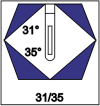 |
 |
 |
Configuration of reflector: 31/35 Both pairs of reflectors are totally closed. Configuration appropriately replaces two ordinary luminaries on one pole. Usage: Useful setting for illumination of public open spaces, car parks or pedestrians zones. |
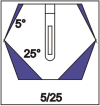 |
 |
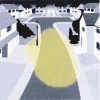 |
Configuration of reflector: 5/25 is convenient to illuminate standard roads from one side when keeping claims on illumination of both pavements. |
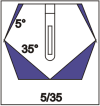 |
 |
 |
Configuration of reflector: 5/35 Alike configuration 5/25 but wider road. |
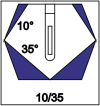 |
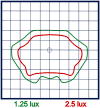 |
 |
Configuration of reflector: 10/35 improves illumination behind the luminary. |
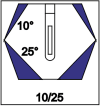 |
 |
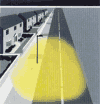 |
Configuration of reflector: 10/25 is determined for illumination of roads with a pavement only along one side of luminyries. The exact setting of multifunction optics is designed by a computing programme an include in a delivery. |
|
Technical data of izolux diagrams: pure glazing of the luminary, pure lamp 70 W HPS 6,7 klm, mounting height 6 m, maintenance factor 1 |
|||




